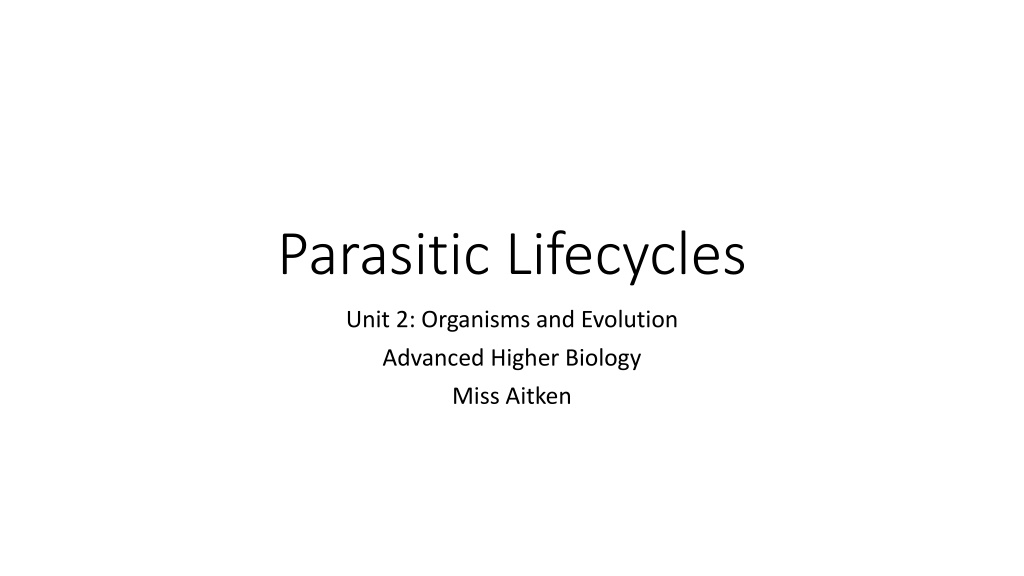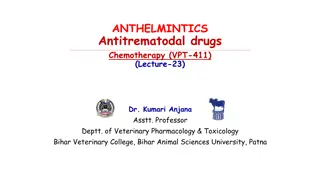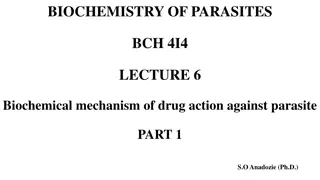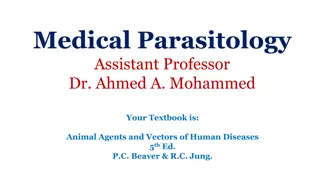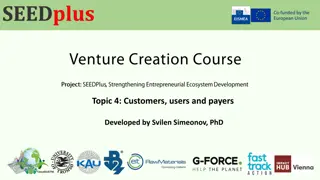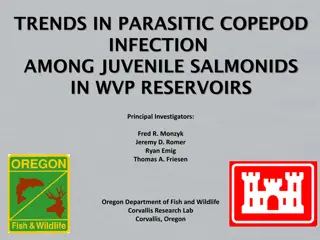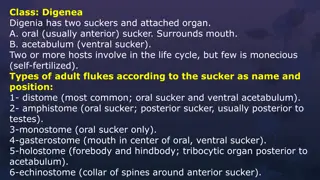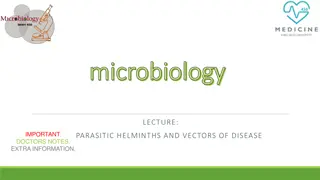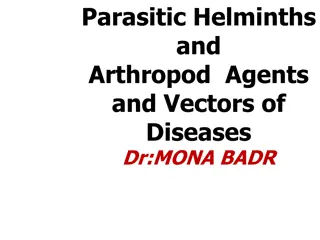Understanding Parasitic Lifecycles and Evolution in Biology
Explore the intricate world of parasites and their lifecycles, from Protists to Bacteria, understanding how parasitism is a successful survival strategy. Discover the diversity of parasites, their lifecycle complexities, and the importance of multiple hosts in parasite development through examples like Plasmodium and Schistosoma.
Download Presentation

Please find below an Image/Link to download the presentation.
The content on the website is provided AS IS for your information and personal use only. It may not be sold, licensed, or shared on other websites without obtaining consent from the author. Download presentation by click this link. If you encounter any issues during the download, it is possible that the publisher has removed the file from their server.
E N D
Presentation Transcript
Parasitic Lifecycles Unit 2: Organisms and Evolution Advanced Higher Biology Miss Aitken
Types of Parasites There are 6 main types of parasite: Protists (e.g. Plasmodium causes malaria) Arthropods (ticks, lice) Platyhelminths (e.g. tapeworm) Nematodes (e.g. threadworm) Viruses (e.g. HIV, Influenza) Bacteria (e.g. tuberculosis)
Types of Parasites Being a parasite is such a good strategy for survival that many other groups of organisms have members that are parasites. For example, some mammals like the vampire bat, and some fish, like the lamprey, are considered to be parasitic in their behaviour.
Parasites with one host Some parasites that are in direct contact with the host can complete their lifecycle within one host species. Human head lice go from egg through to full maturity on one host Parasitic amoebas go from the start of their lifecycle to the finish in the large intestine of their host. Cysts are released in faeces and are found in contaminated food or water Bacteria and viruses complete many lifecycles inside a host. When the host breathes out, the parasites are transmitted in droplets to the next host.
Many parasites need more than one host Some parasites have to spend part of their lifecycle in an intermediate host to complete the next stage of their development. This improves transmission and virulence. The eggs of the pork tapeworm are passed out from a person in the faeces and are eaten by pigs. The pig is the intermediate host. The eggs hatch and develop as cysts in the muscle tissue before being consumed by a human as pork.
Important Parasitic Lifecycles The lifecycle of Plasmodium parasites The lifecycle of Schistosoma parasites
